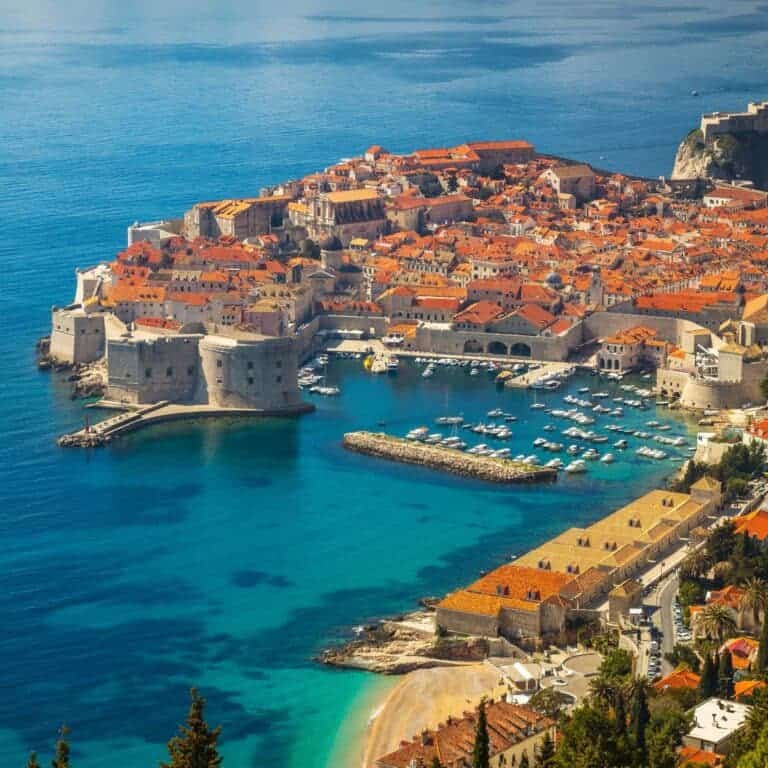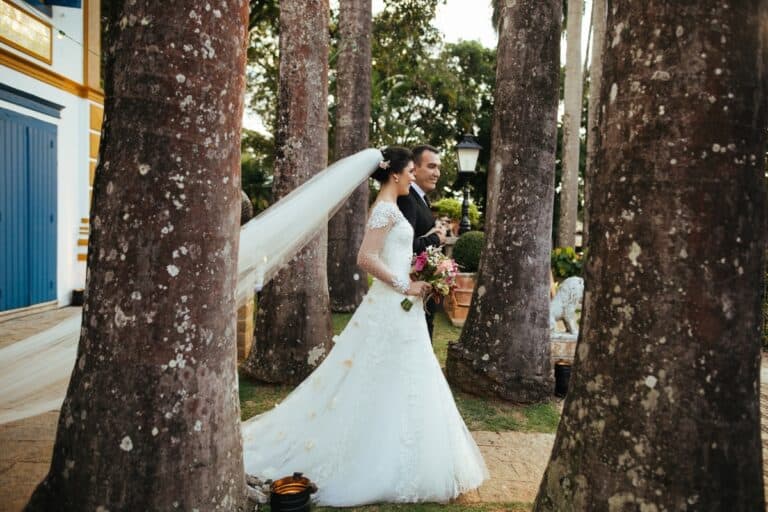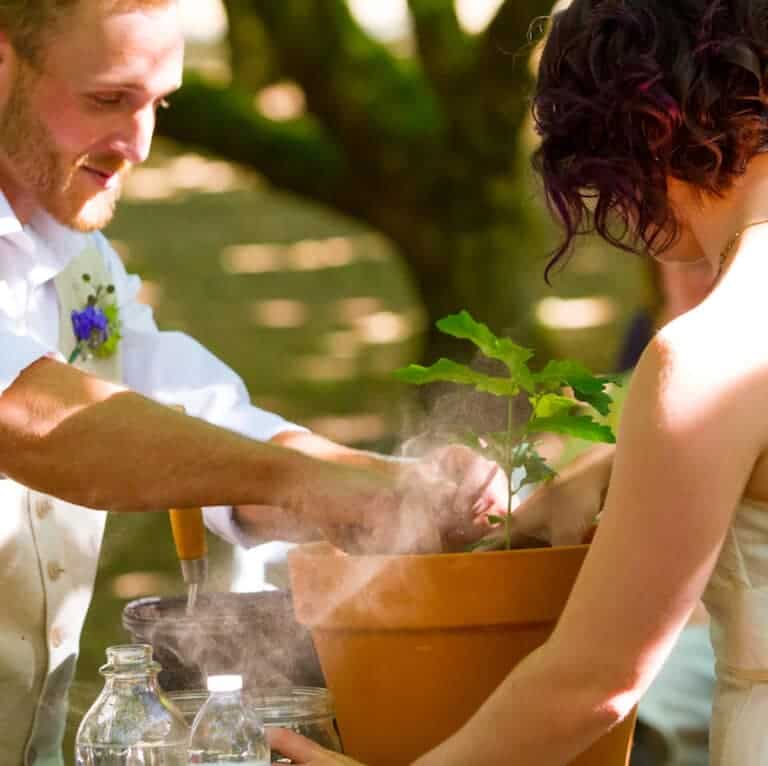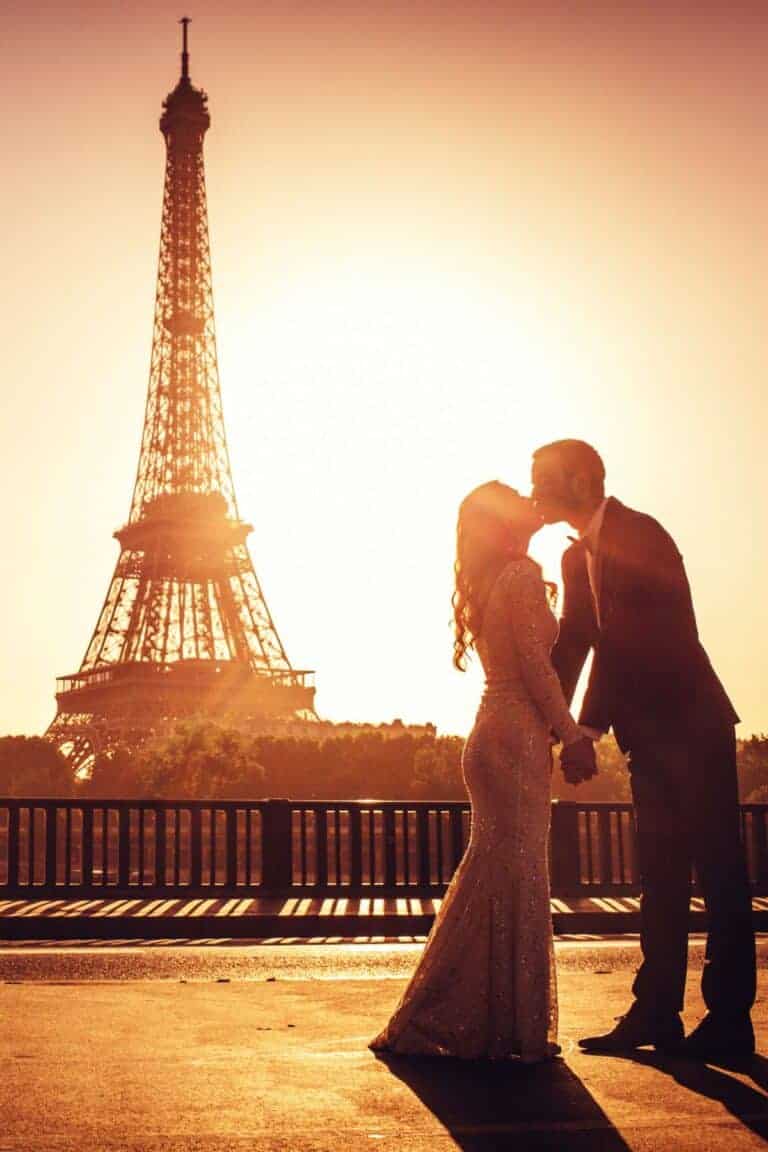Spanish Wedding Traditions
Spain is well-known for its vibrant culture, as well as its romanticism. It is well known for big parties until the early morning hours and is steeped in tradition. Spanish wedding traditions take on all these elements of Spanish culture.
Many of the customs observed in traditional Spanish weddings are based on the Catholic faith because Spain is predominantly Catholic. Due to Spain’s history of colonization, many Spanish wedding traditions have also made their way into other cultural traditions, such as much of Latin America.
Spain has also become a trendy place for destination weddings, which may influence the customs observed in Spanish and other cultures. In this article, we will explore some traditional wedding customs in Spain.

Engagement rings
A common practice for the bride is wearing their engagement ring on the left hand’s ring finger when they get engaged. When married, they wear their wedding ring on the ring finger of their right hand rather than wearing both rings on the same finger.
Traditional flower
Spanish traditions prefer the orange blossom as the typical wedding flower. Orange trees are prevalent in Spain and symbolize prosperity and happiness. The blossoms are fragrant and often used for the bride’s bouquet, on the wedding cake, and as decoration in the wedding venue.
As orange trees often bear fruit and blossom simultaneously, orange blossoms are believed to bring joy and happiness to the couple and symbolize fertility.
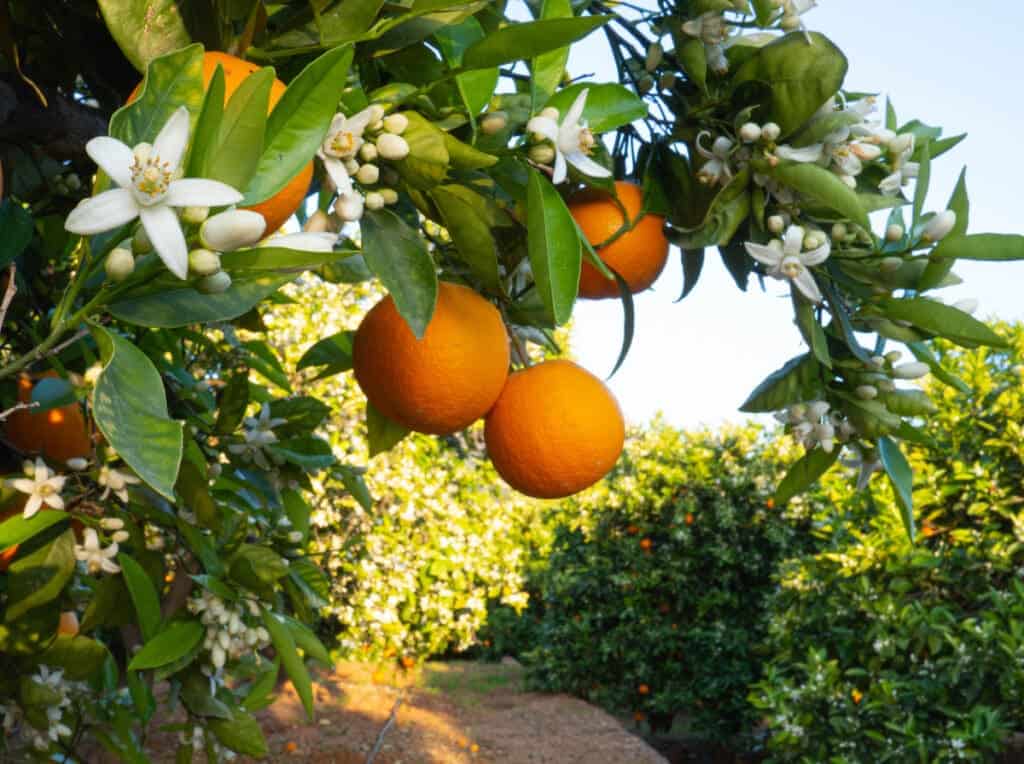
Bride’s attire
A tradition in Spain is for the bride to wear a black silk wedding dress, veil, or mantilla. The black wedding gown symbolizes the bride’s commitment to the groom until death. In 17th Century Spain, it was common for women to wear a mantilla daily.
However, as that practice declined, it became reserved for special occasions, such as weddings. In recent years, modern brides have worn white dresses. However, some may want to honor this tradition or move away from the white dress that has become standard on a more global scale.
Padrinos
Spanish weddings don’t tend to have a wedding party. Instead of bridesmaids and groomsmen or maid of honor and best man, they have padrinos, meaning godfather or patron. The padrinos roles are to give advice and support to the bride and groom and to act as witnesses to the marriage.
The bride and groom can choose their padrinos, however, traditionally they tend to be the father of the bride and mother of the groom.
Banquete de bodas
During the banquete de bodas (or convite), or the wedding feast, it is traditional for guests to approach the head table and present the bride and groom with gifts.
These gifts may be items or money and are generally given to express the guests’ gratitude for the invitation. At some weddings, the bride and groom, or the padrinos, will also present the guests with wedding favors.
Food and Drink
Paella and seafood are commonly served at a Spanish wedding. Paella is a traditional Spanish food and consists of rice, seafood, and vegetables. It is cooked in a large flat frying pan on an open flame and intended to be shared, representing unity and togetherness.
The wedding cake is traditionally full of almonds and fruit and is served as dessert. Sangria also tends to be flowing at a Spanish wedding.

Cake cutting
It is a tradition for the newlyweds to cut their cake with a ceremonial sword. The couple usually holds the sword together, with their hands interlocked. This symbolizes the couple’s commitment to work together and support each other in their marriage.
Bouquet
Although some Spanish brides will throw the bouquet to single friends, it is more common to hand out small pins or corsages. If anyone loses their corsage during the wedding, it is believed that they will be the next to get married.
Las Sequidillas Manchegas
Las seguidillas manchegas is the traditional wedding dance in Spain. It happens after dessert has been served and the bouquet has been thrown. In the seguidillas manchegas, to dance with the bride, the quests must pay her some money.
At some weddings, the guests may bid on the bride’s garter. The bride and groom’s money is then used to support their life together.
Tie cutting
Another tradition that is often practiced at Spanish weddings is the cutting of the groom’s tie. The groom’s close friends will take scissors and cut the tie into small pieces. They auction the pieces off to make money for the couple’s future.
Las Arras
In Spanish Catholic weddings mainly, the groom presents the bride with 13 gold coins known as Las Arras, or unity coins. These are often gifted to the couple by the padrinos. Based on the catholic faith, these coins are sometimes believed to represent Jesus and his 12 apostles.
In the context of the wedding, they tend to symbolize good fortune and financial prosperity for the couple or the groom’s promise to care for and support the bride. In more modern wedding ceremonies, couples often use these coins to symbolize their equal commitment to each other and to providing for their future.

Throwing rice or flower petals
The wedding custom of throwing rice or rose petals over the newlyweds as they leave the venue is observed worldwide. It is also very common in the Spanish tradition. This practice is believed to bring good luck to the newlywed couple.
Marriage leave
Spanish law gives newlyweds 15 days of paid leave following their wedding. Couples generally use this to take their luna de miel, or honeymoon. This leave is taken from the first business day after the wedding; however, in some cases can be negotiated for later on.
Libro de familia
The libro de familia, or family book, is an important document in Spain, acting as a legal certification for the marriage. Generally following the luna de meil, the couple will visit a registry office and present their marriage certificate to receive the book.
If they have children, their births are also recorded in the Libro de Familia.
Surname customs
It is very common in Spain for people to keep their surnames after getting married. Typically, a Spanish surname is made up of both parents’ surnames. Traditionally, the first surname is the father’s first surname, and the second is the mother’s. If the couple has children, the children tend to be given the paternal surname of each parent.
Today, in more modern weddings, many couples are moving away from some of the traditional Spanish wedding customs or making them their own. For example, some couples opt for a civil ceremony rather than a church-based wedding. However, many couples will combine more modern elements with more traditional.
Although many traditions are changing or becoming less common, many couples still opt for elements of a traditional Spanish wedding day.

